#james clarence mangan
Text
there was lightning in my blood,
James Clarence Mangan, Dark Rosaleen
#James Clarence Mangan#literature#words#quotes#academia#dark academia#quote#lit#books#books and libraries#reading#quote of the day#bookworm#book quotes#prose#booklr#bibliophile#excerpt#light academia#poetry
588 notes
·
View notes
Text
A poem for St. Patrick's Day by James Clarence Mangan

Woman of Three Cows
O woman of Three Cows, agra! don’t let your tongue thus rattle!
O, don’t be saucy, don’t be stiff, because you may have cattle.
I have seen - and, here’s my hand to you, I only say what’s true -
A many a one with twice your stock not half so proud as you.
Good luck to you, don’t scorn the poor, and don’t be their despiser,
For worldly wealth soon melts away, and cheats the very miser,
And Death soon strips the proudest wreath from haughty human brows;
Then don’t be stiff, and don’t be proud, good Woman of Three Cows!
See where Momonia’s heroes lie, proud Owen More’s descendants,
’Tis they that won the glorious name, and had the grand attendants!
If they were forced to bow to Fate, as every mortal bows,
Can you be proud, can you be stiff, my Woman of Three Cows!
The brave sons of the Lord of Clare, they left the land to mourning;
Mavrone! for they were banished, with no hope of their returning
Who knows in what abodes of want those youths were driven to house?
Yet you can give yourself these airs, O Woman of Three Cows!
O, think of Donnell of the Ships, the Chief whom nothing daunted
See how he fell in distant Spain, unchronicled, unchanted!
He sleeps, the great O’Sullivan, where thunder cannot rouse -
Then ask yourself, should you be proud, good Woman of Three Cows!
O’Ruark, Maguire, those souls of fire, whose names are shrined in story
Think how their high achievements once made Erin’s highest glory
Yet now their bones lie mouldering under weeds and cypress boughs,
And so, for all your pride, will yours, O Woman of Three Cows!
The O’Carrolls, also, famed when Fame was only for the boldest,
Rest in forgotten sepulchres with Erin’s best and oldest;
Yet who so great as they of yore in battle or carouse?
just think of that, and hide your head, good Woman of Three Cows!
Your neighbour’s poor, and you, it seems, are big with vain ideas,
Because, inagh! you’ve got three cows - one more,! see, than she has.
That tongue of yours wags more at times than Charity allows,
But if you’re strong, be merciful, great Woman of Three Cows!
Now, there you go! You still, of course, keep up your scornful bearing,
And I’m too poor to hinder you; but, by the cloak I’m wearing,
If I had but four cows myself, even though you were my spouse,
I’d thwack you well to cure your pride, my Woman of Three Cows!

James Clarence Mangan
(1803-1849)
Image: Figure of a Young Woman in a Landscape by Jack Butler Yeats RHA (1871-1957) Indian ink and watercolour
Author image: Memorial bust of Mangan in St. Stephen's Green, sculpted by Oliver Sheppard
Mangan, who claimed to have translated his poem from the Irish, wrote: This ballad, which is of a homely cast, was intended as a rebuke to the saucy pride of a woman in humble life, who assumed airs of consequence from being the possessor of three cows. Its author's name is unknown, but its age can be determined, from the language, as belonging to the early part of the seventeenth century. That it was formerly very popular in Munster, may be concluded from the fact, that the phrase. "Easy, oh, woman of the three cows!" has become a saying in that province, on any occasion upon which it is desirable to lower the pretensions of a boastful or consequential person.
1 note
·
View note
Text

SHANE MACGOWAN (Died November 30th 2023,at 65). Irish musician who was best known as the lead singer and songwriter of Celtic punk band the Pogues. Many of his songs were influenced by Irish nationalism, Irish history, the experiences of the Irish diaspora (particularly in England and the United States), and London life in general. He often cited the 19th-century Irish poet James Clarence Mangan and playwright Brendan Behan as influences. Between 1985 and 1987, he co-wrote the Christmas hit single "Fairytale of New York", which he performed with Kirsty MacColl. Other notable songs he performed with The Pogues include "Dirty Old Town", "Sally MacLennane" and "The Irish Rover". In the following years MacGowan and The Pogues released several albums including their most critically acclaimed album, If I Should Fall from Grace with God (1988), which also marked the high point of the band's commercial success.Shane MacGowan - Wikipedia
#Shane MacGowan#Irish Musicians#Musicians#The Pogues#Fairytale of New York#Kirsty MacColl#Notable Deaths in November 2023#Notable Deaths in 2023
5 notes
·
View notes
Text
“Róisín Dubh” (pronounced Ro-sheen dove or Ro-sheen doo, meaning “Dark Rose”), written in the 16th century, is one of Ireland’s most famous political songs. It is based on an older love-lyric which referred to the poet’s beloved rather than, as here, being a metaphor for Ireland. The intimate tone of the original carries over into the political song. It is often attributed to Antoine Ó Raifteiri, but almost certainly predates him. Originally translated from the Irish language by James Clarence Mangan, this translation is credited to Pádraig Pearse.
#Muireann Nic Amhlaoibh#Róisín Dubh#dark rose#no comment tunes#still waters run deep tunes#ceol gaeilge#irish chamber orchestra
14 notes
·
View notes
Video
youtube
Stolen Child, harp cover by Belgradeharpist
youtube
youtube
This poem by WB Yeats tells of faeries charming children away from the human world, an old Irish legend for why children sometimes disappeared seemingly into thin air. It was said the children ran away to Faeryland. Loreena McKennitt (composer/arranger) has given the piece the more modern meaning of childhood being stolen by media and technology. I dedicate this song to all those whose childhood was stolen from them.
youtube
https://youtu.be/cHReT5cggDw
Vocal/ Ének: Tímea Tóth-Jakab Instrumental karaoke recorded and produced by Helena Korsak:
youtube
Analysis of 'The Stolen Child' by W. B. Yeats
Click here for a reading of the poem:
http://www.youtube.com/watch?v=mEGXO2...
95 Comments “He's talking about the inevitable heartbreaking loss that all children experience within themselves when they move into adulthood. He's talking about how they want to remain children, how they're not ready, and how the perceived violence of the adult world makes them want to walk away into the water and the wild, and, actually, its safety. How does she not know of Yeats's involvement with magic?”
+ “I couldn't agree more. While I think that her analysis is quite good, I think that the underlying meaning here is that transformation from childhood to adulthood.
&”Thank you very much Ms Dempster. You have covered alot of albeit a very academic overview of the poem. My degree alas is not in English, however being Irish qualifies me to see possibly were others cannot. Please dont take this as being smug. We have a saying in Ireland 'away with the fairies' were applications can be used for daydreaming in thought but moreover the term is used to describe madness, further achieved in the poem by the repetitive use of the word 'weeping'. The water in Irish folk lore is a place called Tir Na Nog, the land of eternal youth directley pointed to: 'Far off by furthest Rosses we foot it all the night' with a capital R being the Rosses in Sligo, by the sea aka Tir Na Nog. The leafy Island is Inisfree, again in Sligo can be seen at the bottom of Glen Carr (lough Gill) looking out towards Rosses point. I think the reference of 'Human child' is of the human race and not a boy as suggested, rather if one lives in grief he grows old and looses his youth (innocence) with the realities and pains of weepng and grief, were if he turns his back on the realities of weeping he tricks himself into madness, in step the faery folk. So, to keep his innocence some trickery of the other world brings him into moonlit madness. The slumbering trout while asleep is aware he may caught, the fairies I suppose whisper to his ear the threat of capture. For here he comes, yes the achievement of capture by willingness is quite a frightening prospect, in weeping do we stay in reality or escape into denial and into the world of the fairy with the promise of eternal youth? In short, I think its the transition of youth into manhood with either madness from weeping as a reality or leaving this realm into Tir Na Nog as an alternative reality are but our only choices. As the legend goes, if you enter Tir Na Nog, you never come back. / I also think that James Clarence Mangan (an other great Irish poet) was a source of much inspiration to Yeates and his very public demise into madness may have been a strong influence in this poems flavour. Please respond
+& “ One interpretation I read was that the child has already been stolen; the 'world' has stolen the child's innocence and imagination, and the faeries simply wish to retrieve it.”
youtube
0 notes
Text
ROLL forth, my song, like the rushing river,
That sweeps along to the mighty sea;
God will inspire me while I deliver
My soul of thee!
Tell thou the world, when my bones lie whitening
Amid the last homes of youth and eld,
That once there was one whose veins ran lightning
No eye beheld.
Tell how his boyhood was one drear night-hour,
How shone for him, through his griefs and gloom,
No star of all heaven sends to light our
Path to the tomb.
Roll on, my song, and to after ages
Tell how, disdaining all earth can give,
He would have taught men, from wisdom's pages,
The way to live.
And tell how trampled, derided, hated,
And worn by weakness, disease, and wrong,
He fled for shelter to God, who mated
His soul with song.
--With song which alway, sublime or vapid,
Flow'd like a rill in the morning beam,
Perchance not deep, but intense and rapid--
A mountain stream.
Tell how this Nameless, condemn'd for years long
To herd with demons from hell beneath,
Saw things that made him, with groans and tears, long
For even death.
Go on to tell how, with genius wasted,
Betray'd in friendship, befool'd in love,
With spirit shipwreck'd, and young hopes blasted,
He still, still strove;
Till, spent with toil, dreeing death for others
(And some whose hands should have wrought for him,
If children live not for sires and mothers),
His mind grew dim;
And he fell far through that pit abysmal,
The gulf and grave of Maginn and Burns,
And pawn'd his soul for the devil's dismal
Stock of returns.
But yet redeem'd it in days of darkness,
And shapes and signs of the final wrath,
When death, in hideous and ghastly starkness,
Stood on his path.
And tell how now, amid wreck and sorrow,
And want, and sickness, and houseless nights,
He bides in calmness the silent morrow,
That no ray lights.
And lives he still, then? Yes! Old and hoary
At thirty-nine, from despair and woe,
He lives, enduring what future story
Will never know.
Him grant a grave to, ye pitying noble,
Deep in your bosoms: there let him dwell!
He, too, had tears for all souls in trouble,
Here and in hell.
~
James Clarence Mangan (1803-1849)
"The Nameless One"
#James Clarence Mangan#The Nameless One#poetry#writing#dublin#19th century poetry#19th century#irish poetry
13 notes
·
View notes
Text
Put it into Faded Words | O’Hussey’s Ode to the Maguire by James Clarence Mangan (Poetry #1)

Dear reader,
Welcome to Put it into Faded Words, this new poetic mini-series on the blog. The plan is to post a new audio at least once a week (and if the response to this first one is positive, of course). This collection will be dedicated to Irish poetry, but I am also envisioning a William Blake special somewhere in the future as well as a reading of ‘The Raven’ by Edgar Allan Poe.
The aim of this series will be to make people aware of the poets that might otherwise be forgotten or solely be known in, this case, Ireland. In the future, there will be readings of Scottish and British poets too.
For now, let’s start at this humble beginning. Please excuse the perchance nasal tone of voice, I am down with a heavy cold and drinking whiskey is not helping very much yet. Regardless, I dearly hope you enjoy.
Yours sincerely,
R.R. Valravn
P.S: I am well aware my accent is not perfect, stuck between Irish and Scottish. Mayhaps some time in Cork will draw a clearer distinction. However, for now, this is it and by no means will it change.
O’Hussey’s Ode to the Maguire by James Clarence Mangan (text)
My reading of the poem
10 notes
·
View notes
Photo
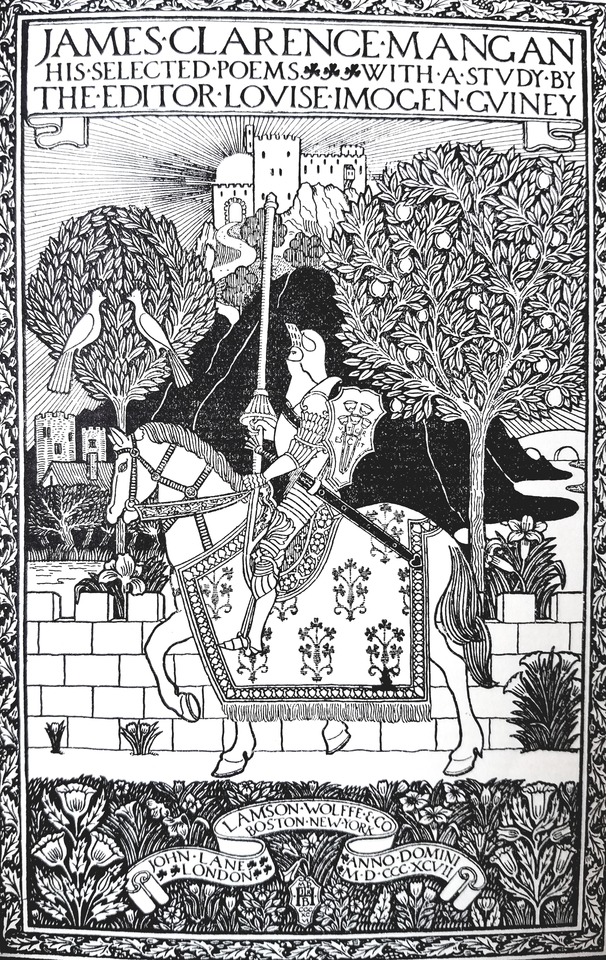
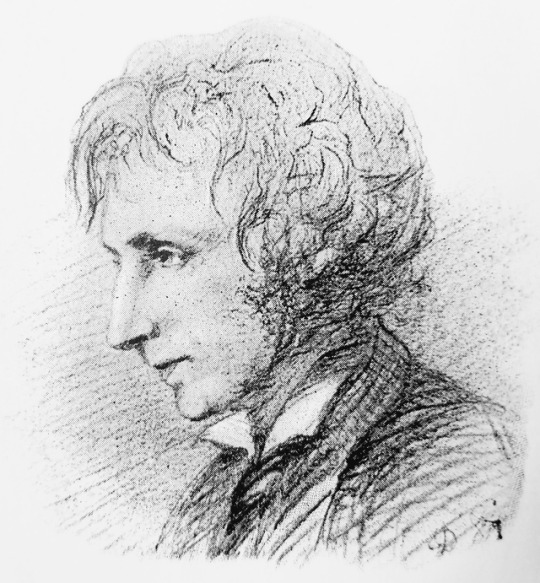
James Clarence Mangan (1 May 1803 – 20 June 1849)
Irish poet.
From our stacks: Title page and frontispiece “Ever yours faithfully, J.C. Mangan” from James Clarence Mangan. His Selected Poems, With a Study by the Editor Louise Imogen Guiney. London: John Lane. Boston - New York: Lamson Wolffe & Co., 1897.
#james clarence mangan#mangan#irish poet#irish literature#irish poets#poet#poets#irish#literature#literary#book#old book#old books#irish lit#knight#illustration#book illustration#writer#writers#irish writer#irish writers#irish poetry#poetry#detroit public library
24 notes
·
View notes
Photo


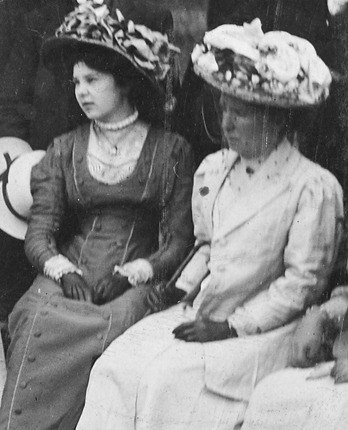
‘Bust of James Clarence Mangan, Stephen's Green, Dublin: Unveiled in Stephen's Green in 1909 May 3rd, by Dr. George Sigerson’
#me actually posting something 20th century?? it's more likely than you think#1909#1900s#edwardian#edwardian era#edwardian fashion#1900s fashion#20th century fashion#20th century#early 20th century
16 notes
·
View notes
Link
0 notes
Photo
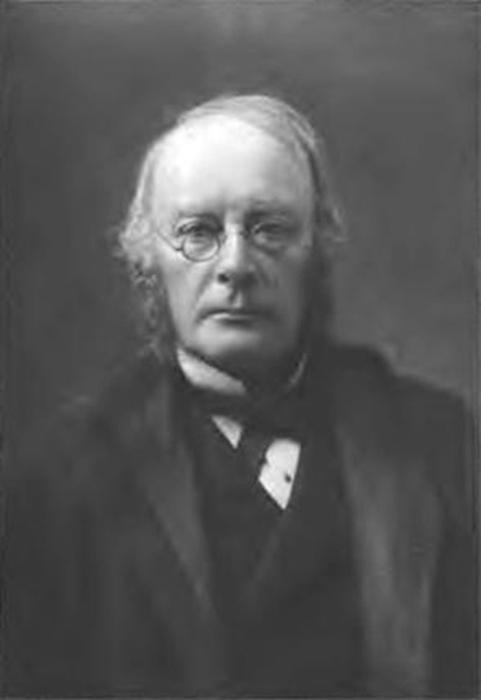
İrlanda’nın Mangan adında dünyada çok bilinmeyen milli bir şairleri vardır. James Clarence Mangan’ın en önemli özelliği Trinity College’in kütüphanesinde kendi kendi Türkçe öğrenip, Türkçe şiirler yazmış olmasıdır. Mangan Türkiye’ye hiç gelmemiştir fakat gelip görmüş gibi şiirler yazmıştır.
“Lâ ilâhe, illallah!
Kuşlar gibi neşeli uçtuk
Biz: Emrâh, Osman, Perizâd;
Güldük, şakalaştık ve seyrettik.
Şarap, güller, neş’e, türkü söyledik.
Bütün şöhretlerden vazgeçtik.
Altın ve mücevhere değer vermedik hiç.
Lâ ilâhe, illallah!
Boğaziçi, Boğaziçi
Bize engel olmadı
Her gün neş’e içinde
Yeşil Boğaziçi’ni
Bir yelkenliyle geçtik”
#şiir#şiirsokakta#şiirheryerde#şiirler#şiirhayattır#kitap#kitaplar#kahvekitap#kitap özeti#sözler#aşk sözleri#kitap sözleri#sevda sözleri#şarkı sözleri#dublin#irlanda#irish#culture#turkish#turkey#turkiye#vintage#vintagehome#flowers
6 notes
·
View notes
Note
12, 18 and 30 for the songs asks :)
12. three favourite songs from video games
‘Onward’ from The Banner Saga, composed by Austin Wintory and performed by Malukah and Taylor David.
‘Isolated’ by Chiasm, from Vampire the Masquerade: Bloodlines.
‘Lullaby of Woe’ from Witcher 3: The Wild Hunt (here performed by Alina Gingertail).
Damn it was difficult to choose only three. :D
18. three songs that remind you of your best friend
I don’t think I have one single best friend, so I’ll just post three songs that remind me of my best friends, plural:
Leonard Cohen - If It Be Your Will
Queen - Bohemian Rhapsody
Corvus Corax - Fiach Dubh
30. three songs you really want your followers to know (for reasons other than all those above)
Oh no, some of these will probably inevitably overlap with some of those questions, but… Let’s go with ‘three songs that are poem/works of prose/etc. set to music’?
Faun - Pearl (’And Then No More’ by James Clarence Mangan)
Mediæval Bæbes - The Lament (’Home’ by Robert Burns)
Méav - Full Fathom Five (’Ariel’s Song’ from ‘The Tempest’ by William Shakespeare
2 notes
·
View notes
Photo
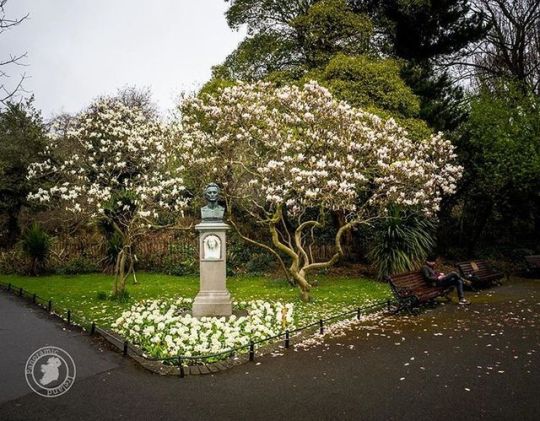
Magnolia and flowers surround the bust of Irish romantic poet James Clarence Mangan in Dublin's Saint Stephen's Green Park. (at St Stephen's Green)
4 notes
·
View notes
Text
Thursday round-up
At Bloomberg, Greg Stohr reports that the court “will end its term Thursday morning with historic rulings that will probably determine whether the public sees President Donald Trump’s long-hidden financial records before the November election.” For The New York Times, Adam Liptak looks at the two cases involving the president’s records, “one concerning subpoenas from House committees, the other a subpoena from the Manhattan district attorney, Cyrus R. Vance Jr., a Democrat.”
Yesterday the court handed victories to religious employers in two cases. In Little Sisters of the Poor Saints Peter and Paul Home v. Pennsylvania, the justices voted 7-2 to reject a challenge to the expansion of an exemption from the Affordable Care Act’s birth control mandate to employers with religious or moral objections. Amy Howe analyzes the opinion for this blog, in a post that first appeared at Howe on the Court. Kevin Daley reports at The Washington Free Beacon that Justice Clarence Thomas’ majority opinion “said the ACA gives the executive branch broad discretion to decide what kinds of preventive services, like birth control, employers must cover[:] If the government has a lot of latitude to set coverage requirements, it follows that it has similarly wide authority to dictate exemptions, the Court said.” Additional coverage comes from Tyler Olson and others at Fox News, Tucker Higgins and Dan Mangan at CNBC, and Steven Mazie at The Economist’s Espresso blog.
At National Review’s Bench Memos blog, Ed Whelan notes that “[t]his victory for the Little Sisters does not bring an end to the litigation.” The editorial board of the Chicago Tribune writes that “under the rules Congress itself created when it passed the ACA, the justices’ ruling was the right call.” The New York Times editorial board observes that the decision “reminded Americans once again that [the Roberts Court] is no friend to reproductive rights, or to the vast majority of women who will use some form of birth control in their lifetime.” Additional commentary comes from Alexandra DeSanctis at National Review, Jim Daly in an op-ed at Fox News, and Ian Millhiser at Vox.
In another 7-2 decision, the court held in Our Lady of Guadalupe School v. Morrissey-Berru that employment discrimination suits by teachers fired by Catholic elementary schools are barred by the “ministerial exception.” This blog’s opinion analysis, which first appeared at Howe on the Court, comes from Amy Howe. At Education Week’s School Law Blog, Mark Walsh reports that the court held that “the First Amendment’s religion clauses foreclose federal courts from hearing employment-discrimination claims from teachers at religious schools who have at least some role in teaching the faith.” Ronn Blitzer reports at Fox News that “[t]he decision expanded on a previous ruling from 2012 which said that religious organizations have a ‘ministerial exception’ from employment discrimination lawsuits, but [left] unclear exactly who qualifies as a ‘minister.’” For The Wall Street Journal (subscription required), Jess Bravin and Brent Kendall report that yesterday’s cases “extend[] a line of decisions that have elevated the rights of religious exercise and the role of sectarian institutions in American society.” Additional coverage comes from Tucker Higgins at CNBC.
At the Constitutional Law Prof Blog, Ruthann Robson writes that the decision extends the ministerial exception “seemingly to all teachers employed by religiously-affiliated schools.” James Phillips at PrawfsBlawg explores the “warring views” on the religion clauses revealed by Justice Elena Kagan’s approach to the two cases. At Take Care, Ira Lupu and Robert Tuttle maintain that, “[d]espite legitimate controversy over the application of the ministerial exception, Morrissey-Berru is a reassuring nod toward the continuity of a principle long rooted in the American tradition of church-state separation.” The editorial board of The Wall Street Journal suggests that religious Americans can “take heart” in yesterday’s two rulings. Additional commentary comes from Scott Cosenza at Liberty Nation and Caroline Mala Corbin at Take Care.
Briefly:
At The Texas Tribune, Jolie McCullough reports that “Texas executed Billy Joe Wardlow on Wednesday night for a 1993 East Texas robbery and murder”; “[n]euroscientists and a group of Texas lawmakers [had] raised concerns with sentencing people who had committed crimes under 21 to death because of brain immaturity,” but “[a]ll of Wardlow’s appeals were denied by the U.S. Supreme Court.”
At The Daily Signal, Elyssa Koren asserts that the court’s decision in USAID v. Alliance for Open Society, which held that the enforcement against overseas groups of a requirement that recipients of federal funds to fight HIV/AIDS abroad have a policy opposing prostitution and sex trafficking does not violate the First Amendment, “affirms a vital principle of U.S. foreign involvement, one dear to the heart of the American taxpayer—U.S. money spent abroad must support U.S. interests and priorities.”
At the NCSL Blog, Lisa Soronen discusses Barr v. American Association of Political Consultants, in which the court held on Monday that an exception for government-debt-collection calls to a federal ban on robocalls to cellphones violated the First Amendment, but left the ban in place without the exception.
Also at the NCSL Blog, Soronen writes that “[w]ithout explanation, without referring the matter to the entire U.S. Supreme Court, and without calling for a response, Justice Brett Kavanaugh [recently] denied a request for an emergency injunction to strike down Illinois Governor J.B. Pritzker’s executive order limiting gatherings to 50 people while exempting religious gatherings.”
At Justia’s Verdict blog, Leslie Griffin argues that yesterday’s two rulings, as well as the recent decision in Espinoza v. Montana Department of Revenue, Montana’s exclusion of religious schools from a state-funded scholarship program for private schools violates the First Amendment, combine to undermine women’s rights.
In an op-ed at CNN, Lisa Tucker considers the prospect that Justice Clarence Thomas, “the longest-serving current justice, and already in the Top 20 for longest-tenured justices ever,” might retire from the Supreme Court.
We rely on our readers to send us links for our round-up. If you have or know of a recent (published in the last two or three days) article, post, podcast or op-ed relating to the Supreme Court that you’d like us to consider for inclusion in the round-up, please send it to roundup [at] scotusblog.com. Thank you!
The post Thursday round-up appeared first on SCOTUSblog.
from Law https://www.scotusblog.com/2020/07/thursday-round-up-534/
via http://www.rssmix.com/
0 notes
Text
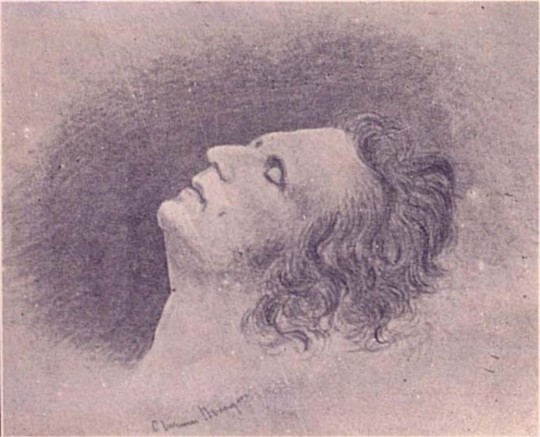
Portrait of James Clarence Mangan, by Frederic Burton, drawn just after Mangan's death in 1849 as he lay in the mortuary of the Meath Hospital.
From [O'Donoghue, 1897].
#James Clarence Mangan#poetry#the nameless one#writing#irish poetry#early 19th century#19th century#ireland#dublin#Frederic Burton#illustration
12 notes
·
View notes
Video
PAINT-A-BOX STREET ART [NEAR THE BLEEDING HORSE PUB]-159669 by William Murphy
Via Flickr:
Many of you living outside Dublin may be surprised to learn that a pub is named the "Bleeding Horse". The Bleeding Horse is a pub on Upper Camden Street. It dates at least back to the 17th century, and was located on St. Kevin's Port (now Camden Street) at the junction of two important highways leading out of the city. On one side was Charlotte Street, leading to Ranelagh and Donnybrook; on the other side was Old Camden Street, which joined Richmond Street, and led to Rathmines and Cullenswood. Both of these old streets disappeared during the renovations in the 1990s. The present building dates from 1871; the interior was renovated in 1992. There are (at least) two explanations for the name. One is that when a horse got the "staggers" it was bled by a farrier at the inn. Another is that the name of the pub comes from an incident during the Battle of Rathmines in 1649, when a wounded horse fled from the battle. The Bleeding Horse has been mentioned in several novels, including the Cock and Anchor (1845) by Sheridan Le Fanu and Ulysses by James Joyce. Literary patrons included James Clarence Mangan and Oliver St. John Gogarty. For several years during the 1960s the name of the pub was changed to "The Falcon", but the original name was replaced in the 1970s.
#camden street#dublin#ireland#street art#bleeding horse#william murphy#infomatique#fotonique#sony#A7RIV
0 notes
![PAINT-A-BOX STREET ART [NEAR THE BLEEDING HORSE PUB]-159669](https://live.staticflickr.com/65535/49461026456_9b4922ed67_b.jpg)